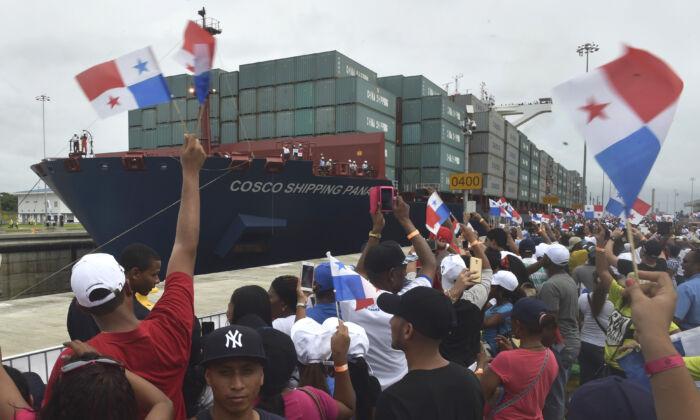Concepts of hegemony have gained currency ever since Russia invaded Ukraine. Though hegemonic relationships have existed throughout history, questions still surround whether one power can legitimately claim sway over its weaker neighbors. The matter goes beyond Europe, too.
China and the United States, for example, challenge each other for hegemony in the western Pacific, though Beijing is more willing to characterize the contest in this way than Washington. Less noticed in the media is another hegemonic tussle going on in Latin America, where China has begun to challenge what was once Washington’s long-established and exclusive dominance.
In its effort, Beijing has made considerable headway, using the economics and finance of its famous Belt and Road Initiative (BRI, also known as “One Belt, One Road”) and like arrangements to extend its political, economic, and military influence from Mexico to Patagonia. Though not universally successful, the list of Chinese inroads is long and striking. Meanwhile, Washington has yet to manage much of a response.
China’s investment portfolio has also expanded greatly. Chinese enterprises have directly invested the equivalent of some $17 billion in projects, mostly in South America. With the equivalent of $137 billion in loans to Latin American governments, the Export-Import Bank of China has vaulted itself into the ranks of the region’s leading lenders. Beijing’s presence has enabled it to become a voting member of the Inter-American Development Bank and of the Caribbean Development Bank. Twenty Latin American countries have signed onto the BRI.
Apart from direct loans to governments, most of the Chinese investment has concentrated on energy development, refining, and power generation. Presently, Power China has 50 ongoing projects across 15 Latin American countries. As is so evident in the BRI, wherever it appears, China’s Latin American investments have built dams, ports, and railroads. Chinese investment monies have also flowed to solar and wind projects, notably Latin America’s largest solar effort in Jujuy, Argentina. Six Latin American countries—Argentina, Brazil, Chile, Ecuador, Peru, and Uruguay—have joined the Asian Infrastructure Investment Bank.

It would seem that China’s primary interest, at least as far as economics is concerned, is in raw materials. Most of what it imports from the region consists of soybeans, copper, petroleum, other oils, and uranium. Purchases of lithium for batteries have expanded strikingly from Mexico and the so-called Lithium Triangle countries—Argentina, Bolivia, and Chile—that contain more than half the world’s known lithium reserves.
But raw materials and economics are not all that are on Beijing’s mind. China has found a ready market for Chinese military equipment and training in the region. Troops and bases are not yet in evidence, but between 2009 and 2019, the most recent year for which data are available, China sold the equivalent of $165 million in military equipment to Venezuela, Bolivia, and Ecuador, including aircraft, air defense radar, and small arms. China has also sold equipment to police forces throughout the region. If troops are not present, several port visits have called attention to China’s growing military prominence.
As is the case in Africa, the Middle East, and elsewhere in Asia, Beijing is using its economic and financial prowess to raise its diplomatic profile and influence. Chinese leader Xi Jinping has visited Latin America 11 times since taking office in 2013 and has signed strategic partnerships—the highest classification Beijing offers diplomatic allies—with seven countries, Argentina, Brazil, Chile, Ecuador, Mexico, Peru, and Venezuela.
Beijing also wants to isolate Taiwan, refusing trade and investments to any country that recognizes the island as anything but a part of China. Whereas 20 years ago, all of Latin America recognized Taiwan’s sovereignty—only eight nations in the region still do. China has recently used the promise of loans and infrastructure investments to flip the Dominican Republic and Nicaragua on the question of Taiwan’s sovereignty.
It will take a lot more for Beijing to undermine the hegemonic position the United States has in the region. But the process has clearly begun—and, so far, with little pushback from Washington. Donald Trump showed little interest in the region, which is strange given his clear concerns about growing Chinese strength at the United States’ expense. Joe Biden, who was the lead on Latin America when he was Barack Obama’s vice president, has acknowledged the Chinese challenge but has done little to counter Beijing’s efforts. The White House, so far, has shown no sign of elevating Latin American trade, development, and investment within U.S. foreign policy.





